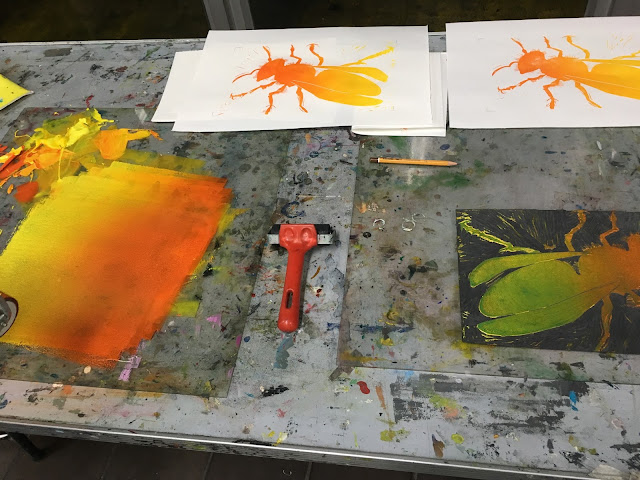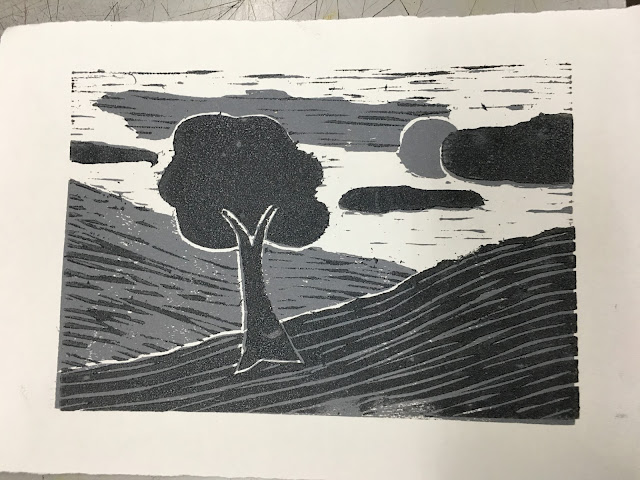For those of you who are interested in producing an edition of prints for the Print Exchange, here are a few tips to help you along, with some useful links.
What is an Edition?
An edition is a set of prints that is as identical as you can make them. They are numbered to indicate the total number produced - so an edition of 10 would be numbered 1/10, 2/10 etc. This is done to let someone know that if they buy your print they are buying one of only 10 produced - this adds value to your print and makes it more collectable than if it were in an edition of say 500 or not editioned at all.Because you need to make the prints as identical as possible it makes some processes difficult to use in editions, such as monotype which by it's very nature is variable from one print to another (there is such a thing as a variable edition but this is not acceptable in this case).
You must use pencil to number your prints - this is because pencil can not be reproduced by machine - the edition number must be on the bottom left of your print, your signature and year on the right and the name of the print in the centre.
Have a look at prints submitted for last year's exchange at the link below, you will see how they are editioned:
http://www.internationalprintexchange.org/viewing.php?2016
What is an Artist's Proof?
It is very bad form to produce more prints than you number for your edition. However it is acceptable to produce about another 10% of the edition number for your own archives. These must be marked A/P - Artist's Proof - in the left bottom corner in place of the edition number.http://www.stjudesprints.co.uk/collections/what-is-an-original-artists-print
What paper should be used?
Any acid free paper should be acceptable. This is because any acids used in the paper making process will, in time start to break down and will discolour and damage the print, especially if the print is in a sealed frame or stored in an archive box. Any supplier of good quality paper will specify if their products are acid free.If you are making your own handmade paper for your edition, then you must make sure any scrap papers that you use are also acid free. Similarly if your print has chine colle - collaged papers on the surface of the print- they must also be acid free and you must use archival glue, which is also acid free (you can get this from bookbinding or picture framing suppliers).
http://www.lawrence.co.uk/shop/Paper-For-Printmaking.html
http://www.johnpurcell.net/
When wrapping your prints for submission, you must also use acid free white tissue paper - this is relatively easy to find.
What inks should be used?
Water based inks are likely not to stay true to their original colour as they can fade with time, it is also difficult to get a consistent print. All oil based inks, including safe-wash types, are acceptable. If you can I would recommend buying a good quality relief printing ink as this will give you the most consistent result (see the links on the blog sidebar for suppliers).Why tear the edges of your print?
Torn edges to your prints are more desirable than cut edges. There are different theories about this. Some say that cutting damages the fibres of the paper, but I think the main reason is if you are using a whole sheet of quality paper then it will have 'deckle' edges rather than cut edges - having a torn edge shows the quality of the paper. The following link shows a good method of tearing down your print:http://www.magical-secrets.com/content/tearing_down_your_prints_step_by_step



















